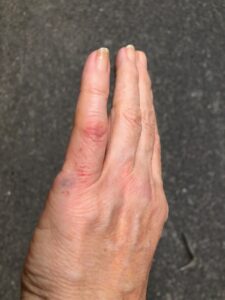Are you familiar with stubbornness? Do you know anybody who is willful?
Someone you know may be habitually disposed to disobedience and opposition. Headstrong is synonymous with froward, now that’s a fun word. Recalcitrant is another good one.
Often, we hear of kids in the throes of the “terrible twos “or threes, described as headstrong. This is sometimes, after they’ve been observed rolling around on the floor in a tantrum of sorts.
In this 21st century of wokeness, obedience and submission, can be tricky concepts, to say the least. It’s not “Leave it to Beaver,” or “Father Knows Best,” of the 1950s anymore, Dorothy!
Self-determination, or gaining mastery over challenges put in front of you is paramount in today’s popular psychology. People want mostly to feel independent, competent, and in control of their daily lives. If somebody comes between us and these things, we’re more than likely to defiantly assert our will, resist the harness, and stand firm and unmoved.
Apparently, some folks have been “determined to have one’s way,” since the late 14th century, when the word headstrong was first used. Strong-headed or “head-bold,” has been an adjective since c. 1600.
If you’re headstrong, you may just want to do what you want to do. Usually, you’re described as such because somebody or something is keeping you from doing what you want to do. Somebody noticed and they’re calling you “headstrong.”
Headstrong, seems to be a negative word, not in the sense of being bad, but in the sense of being against another person. It’s a judgment of someone else, probably someone who is not willing to take your advice, follow your suggestion, or comply with your will on a matter.
Determined to have your own way, you surely must believe that your way is the best way, your view is perhaps the only view, and you’re willing to fight for your right to think the way you think. Some headstrong folks have made history fighting traditions that needed to be changed, or bucking rules that were clearly outdated and required some tweaking.
In my wanderings around the word, headstrong, I came across the derogatory terms: pigheaded and bullheaded. Insulting to both pigs and bulls, these terms, applied to people connote that headstrong people cannot be managed, controlled, or persuaded to change their point of view.
Whether these two species, pigs and bulls, can accurately be characterized as stubborn cannot be substantiated. People on the other hand, well…. We should probably call the occasionally stubborn bull or pig that resists our will, “people-headed,” as in, “You ridiculous pig, you’re acting people-headed, now get a move on.”
Both, being powerful animals, trying to make a pig or a bull comply to your human will, might present a problem for the human, not the animal. But, me thinks both animals, smart as they are, can be trained to follow the leader, given a leader with patience.
Resistance fighters of sorts, headstrong folks are both strong and determined to press forward in their way. Unwilling to be managed, I wonder if someone who is headstrong, might be better, led?
There is a subtle difference between management and leadership. But this little quirk in language usage might make all the difference in training or persuading others to follow your lead.
Nobody wants to be yanked on the neck with a restraint in order to be led to something better, worse, or in between. Although we may just be amenable to a suggestion to follow someone down another path if you show, not tell me where we’re going. You’ve heard the concept, “lead by example.”
I’m not likely to be suddenly pliable, flexible, yielding or compliant if you insult me first. All the reasoning, arguments, and manipulation in the world is unlikely to move me from my firm conviction on a matter if you come at me disparagingly.
Even though I may be headstrong, I might just be amenable to your way if you come toward me with genuine kindness, humility, and intelligence. If you’re likeable, I could potentially be motivated to change my mind. Convince me.




